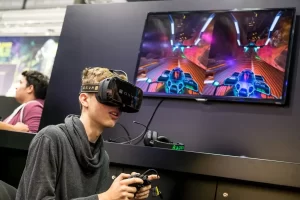
Video games have come a long way since their humble beginnings in arcades. Today, they represent a massive industry that generates billions of dollars in revenue each year. As the gaming industry continues to grow, the way games are monetized and advertised has also evolved. In-game advertising has emerged as a powerful tool for brands to connect with players in a targeted and engaging manner. However, this form of advertising presents unique challenges and requires a deep understanding of the gaming landscape. In this article, we explore the evolution of in-game advertising, the challenges it faces, and the trends that are shaping its future.
The Early Days: Static Ads and Sponsorships
In the early days of gaming, in-game advertising was limited to static ads that appeared within the game environment. These ads were often placed on billboards or signage in virtual worlds, mimicking real-world advertisements. Additionally, game developers sought sponsorships from brands, where the game itself would feature prominent branding or product placements.
While these early forms of in-game advertising were a step in the right direction, they lacked the interactivity and targeting capabilities that modern technology enables. Players quickly grew accustomed to these static ads, leading to diminished impact and relevance.
The Rise of Dynamic and Native Ads
To counter the limitations of static ads, developers turned to dynamic in-game advertising. This approach allows for the insertion of ads that can be updated or changed in real-time. For example, billboards in a racing game could display the latest ads from real-world brands, offering greater relevancy and even geolocation targeting.
Another trend in in-game advertising is the use of native ads, seamlessly integrating advertisements into the game’s storyline or environment. This practice ensures that advertising doesn’t interrupt the player’s experience, leading to a more immersive and enjoyable gameplay.
Challenges and Opportunities
While in-game advertising has seen significant advancements, it still faces challenges that require careful consideration by brands and developers. One of the main hurdles is striking the right balance between revenue generation and player experience. Ads that are too intrusive or disruptive can lead to frustrated players and tarnish the reputation of both the brand and the game.
Another challenge lies in measuring the effectiveness of in-game ads. Traditional metrics used in online advertising, such as clicks and impressions, may not provide a comprehensive understanding of the impact ads have on players. New methods are being developed to measure metrics like brand recall, engagement, and even emotional sentiment to gain deeper insights into the effectiveness of in-game advertising.
Despite these challenges, in-game advertising presents significant opportunities for brands. The gaming audience is vast and diverse, reaching people of all ages and backgrounds. This allows brands to tap into a highly engaged and captive audience that spends hours immersed in their favorite games.
Future Trends: Virtual Reality (VR) and Augmented Reality (AR)
As technology continues to advance, so do the opportunities for in-game advertising. Virtual Reality (VR) and Augmented Reality (AR) games provide new dimensions for brands to engage with players. In these immersive experiences, brands can create interactive and personalized advertisements that seamlessly blend with the virtual environment.
Imagine exploring a post-apocalyptic world in a VR game and stumbling upon a hidden Coca-Cola vending machine. Such experiences heighten brand interaction and provide memorable moments for players.
Furthermore, the rise of live streaming platforms, such as Twitch, has created a new avenue for in-game advertising. Brands can sponsor gamers and have their products showcased to millions of viewers, generating both brand awareness and engagement.
Conclusion
In-game advertising has come a long way and continues to evolve alongside the gaming industry. From static billboards to immersive virtual experiences, brands have recognized the immense potential of connecting with gamers. However, challenges like striking the right balance, measuring effectiveness, and staying ahead of emerging technologies must be tackled to ensure in-game advertising remains a powerful and engaging tool in the future.


